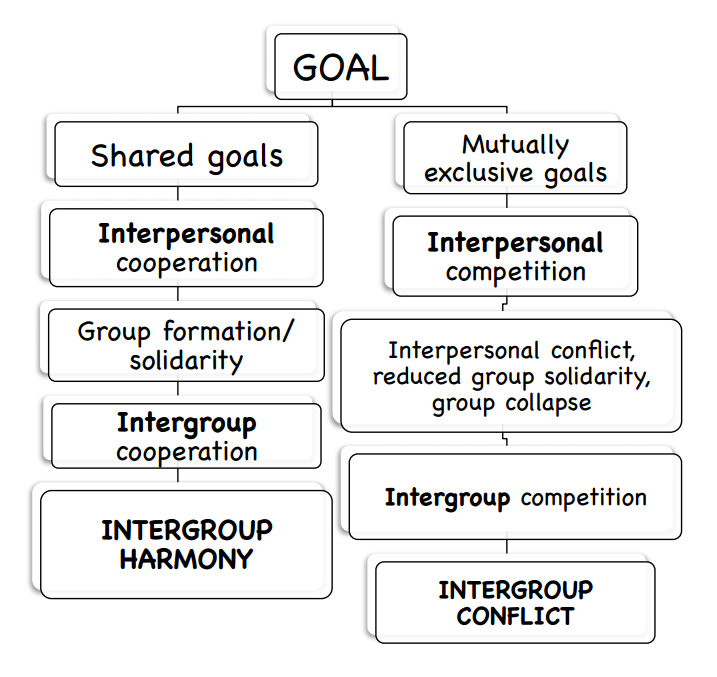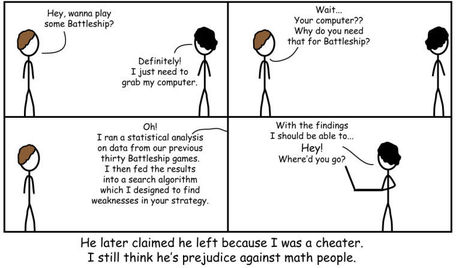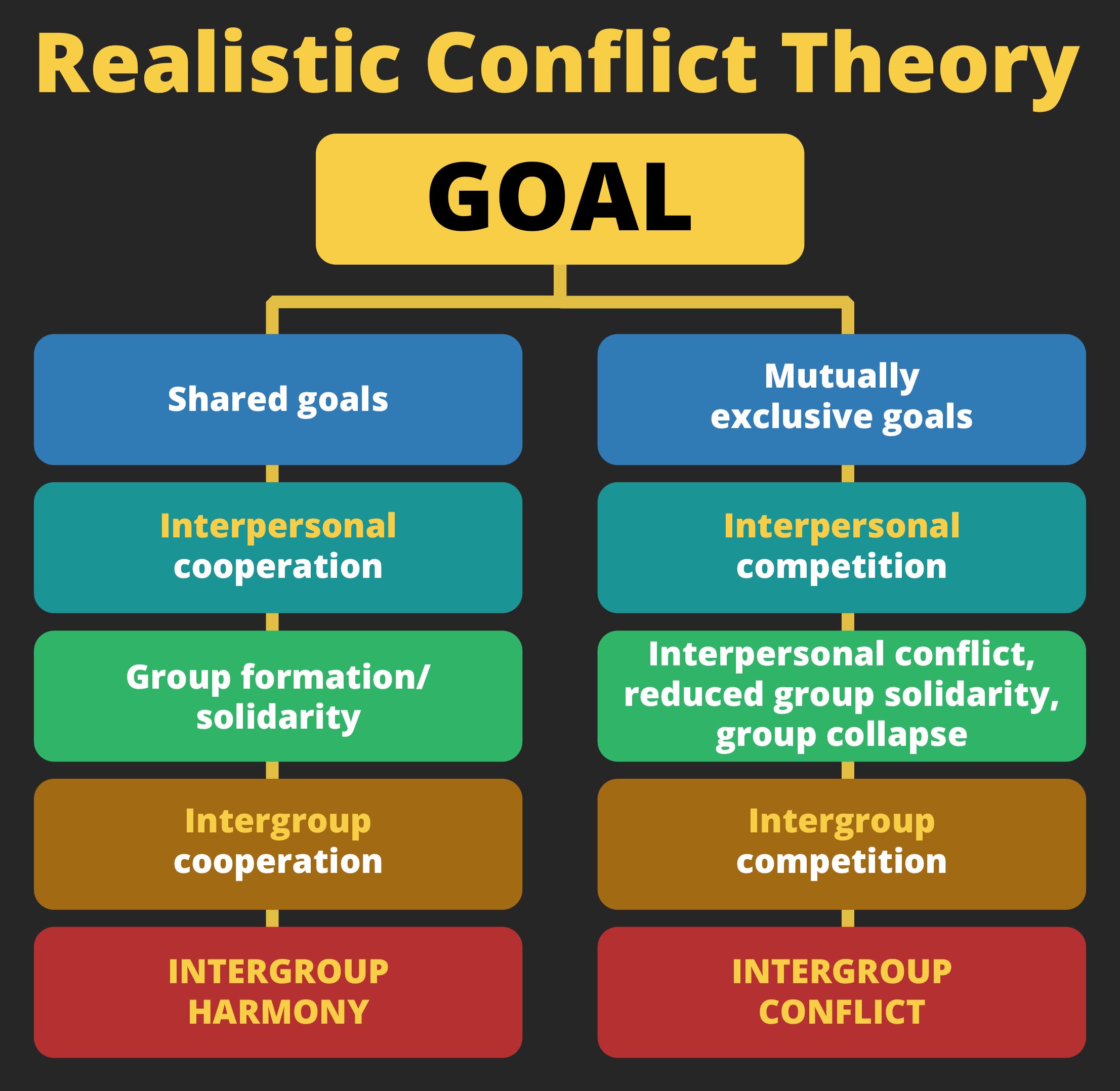What Is Realistic Conflict Theory Used to Describe
Conflict theory is a sociopolitical theory that originated with Karl Marx. It is one of the four paradigms of sociology which include functionalism symbolic interactionism and feminism.

The Three Phases Of Realistic Conflict Theory As Evidenced In The Download Scientific Diagram
The idea that limited resources and competition lead to confli.

. Realistic conflict theory states that whenever there are two or more groups that are seeking the same limited resources this will lead to conflict negative stereotypes and beliefs and discrimination between the groups. Marxs Conflict Theory. We discussed several ways of reducing intergroup bias.
The experiment was based on the Theory of Realistic Conflict. Realistic conflict theory initialized RCT also known as realistic group conflict theory initialized RGCT is a social psychological model of intergroup conflict. Conflict theory examines any social phenomenon through the lens that there is a natural human instinct towards conflict.
Conflict theory originally imagined by Karl Marx is the idea that all of society is in constant conflict due to a lack of resources. This can be brought on by limited resources this can lead to conflict. The conflict can lead to increasing animosity toward the groups and can cause an ongoing feud to develop.
What is realistic conflict theory. An explanation of prejudice which sees competition for limited resources as a key determinant of intergroup relations who developed realistic conflict theory. Realistic conflict theory proposes that intergroup conflicts arise between groups as they compete over the same limited resources.
Marx thought that the established social order only works because those in power can hold resources as a way to keep those with limited resources performing as they wish. This experiment confirmed Sherifs realistic conflict theory also called realistic group conflict theory the idea that group conflict can result from competition over resources. Conflict theory is a field of sociology that focuses on competition and the dynamics of conflicting interests between different social groups as the fundamental force underpinning culture and politics.
Conflict theory originated in the work of Karl Marx who focused on the causes and consequences of class conflict between the bourgeoisie the owners of the means of production and the capitalists and the proletariat the working class and the poorFocusing on the economic social and political implications of the rise of capitalism in. What is realistic conflict theory and how does this study relate to it. Groups may be in competition for a real or perceived scarcit.
Conflict theories of criminal justice look at criminal laws as a means by which more prosperous and powerful social groups exercise control and. This theory is about ones group gain due to another groups loss. Marx is not saying that conflict is good or bad but instead that it is an unavoidable aspect of human nature and helps explain why things are the way they are.
According to its definition when two or more groups are interested in the same scarce resources this will inevitably lead to conflicts as well as certain biases and negative stereotypes between members of different groups. Conflict theory in sociology describes societys tendency to change and develop due to perpetual conflict between classes. RGCT is a well-established theory with robust research support from both laboratory and field studies.
Socioeconomic status ethnicity and differing lifestyles are often examples of factors that separate people into different groups. Perception of someonesomething that is not based on reason or. Realistic conflict theory is an intergroup conflict model developed by social scientist Donald T.
This is a possible cause of prejudice and discrimination development within a society. Perception of someonesomething that is not based on reason or. Realistic conflict theory dates back to the beginning of the 20th century as one of the earliest of social psychological theories regarding prejudice and discrimination.
Please pick two and explain how you would apply them in the context of the Robbers Cave study. In the mid-1950s Muzafer Sherif and others carried out the Robbers Cave experiment on intergroup conflict and co-operation as a part of research programme at the University of Oklahoma. The realistic conflict theory is a social psychology theory that states discrimination is more likely to occur when resources are scarce.
For purposes of this note conflict theory refers to studies of conflict or war using formal reasoning or mathematical approaches. The realistic conflict theory states that whenever there are two or more groups that are seeking the same limited resources this will. The conflict can lead to increasing animosity toward the groups and can cause an ongoing feud to develop.
Realistic Conflict Theory RCT is a social model that attempts to explain why prejudice negative stereotypes and discrimination are developed towards members of other social groups. The results supported Sherifs Realistic Conflict Theory which suggested that intergroup conflicts arise from competition for resources and opposing goals. The realistic conflict theory states that whenever there are two or more groups that are seeking the same limited resources this will lead to conflict negative stereotypes and beliefs and discrimination between the groups.
Unless they involve some new theoretical develop-ment case studies empirical studies and statistical studies of these phenomena are not included here. There is also the realistic theory. Please describe the methods and results of the Robbers Cave study.
RCT is a social theory that. The theory explains how intergroup hostility can arise as a result of conflicting goals and competition over limited resources and it also offers an explanation for the feelings of prejudice and discrimination toward the outgroupthat accompany the intergroup hostility. It is used to understand many of the local and global intergroup conflicts that besiege the world.
These tensions can be described by the realistic group conflict theory RGCT. Examples of social conflict theory can be found in a variety of situations. It seeks to explain political and economic events in terms of an ongoing struggle over finite resources.
The researchers extended the theory to an institutional setting where groups are not actively involved in the decisions but are targets of the decisions made by the. This can lead to more friction within each group when they compete for resources. The study also reveals how such conflicts contribute to things like prejudice and stereotyping.

Realistic Conflict Theory Ao1 Ao2 Ao3 Psychology Wizard

The Three Phases Of Realistic Conflict Theory As Evidenced In The Download Scientific Diagram

Comments
Post a Comment